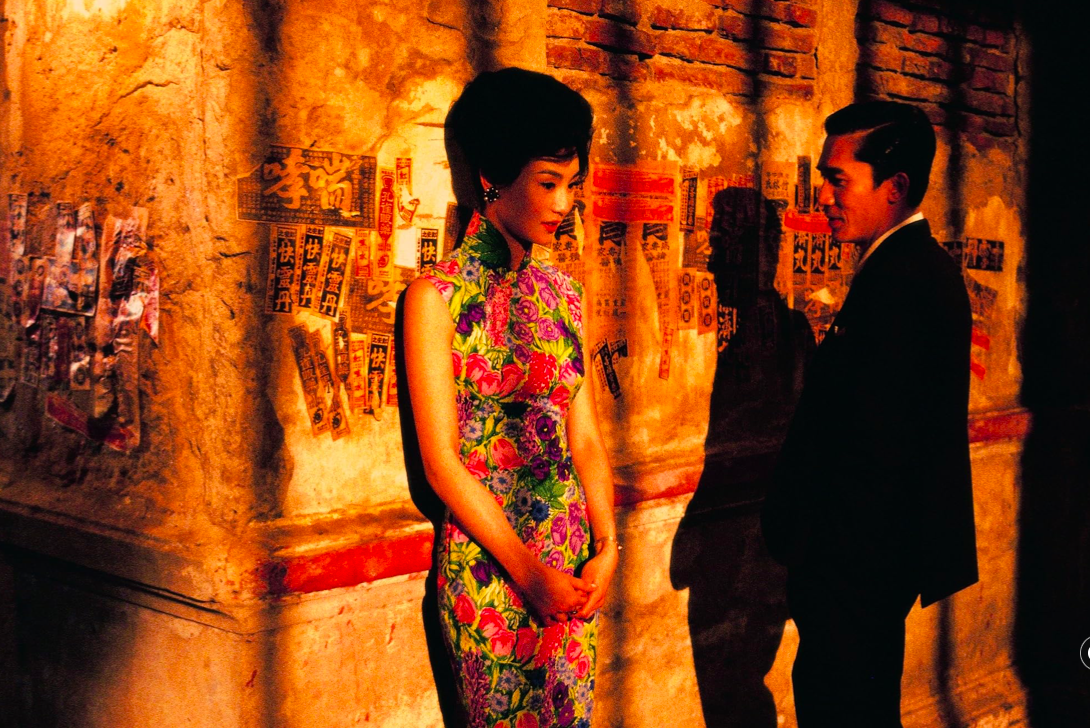OTC Rating : 4.5/5
Introduction
Wong Kar-wai’s In the Mood for Love , streaming on MUBI, is a poetic exploration of unspoken emotions and restrained desires. Set in 1960s Hong Kong, the film beautifully captures the melancholia of forbidden love through masterful storytelling, mesmerizing visuals, and hauntingly beautiful music. Every element, from the evocative cinematography to the impeccable performances, contributes to an unforgettable cinematic experience.
Story & Narrative Structure
The film follows Mr. Chow (Tony Leung) and Mrs. Chan (Maggie Cheung), neighbors who gradually form a bond upon discovering that their respective spouses are having an affair. As they navigate their growing affection, they struggle to maintain moral boundaries. Wong Kar-wai delicately portrays their relationship, focusing on the emotional tension and unsaid words rather than explicit drama.
The narrative unfolds in a fragmented, non-linear manner, mirroring the protagonists’ uncertain emotions. Wong employs poetic storytelling, leaving gaps for viewers to fill with their own interpretations. The film’s slow pacing allows the audience to fully absorb the emotional depth of each moment.
Image credit : IMDB
Direction & Cinematography
Wong Kar-wai’s direction is a masterclass in visual storytelling. Collaborating with cinematographer Christopher Doyle, he uses tight frames, mirrors, and reflections to emphasize the characters’ isolation and inner turmoil. The use of slow motion and lingering shots heightens the emotional tension, allowing viewers to feel every glance and subtle movement.
The camera often peers through doorways or frames the characters against narrow hallways, symbolizing their emotional confinement. Wong’s signature use of vibrant color palettes, especially deep reds and rich greens, evokes the intensity of the suppressed emotions that define the narrative.
Performances
Tony Leung and Maggie Cheung deliver exquisitely restrained performances that convey a profound sense of longing. Leung’s portrayal of the reserved and introspective Mr. Chow is layered with emotional vulnerability, while Cheung’s elegance and sorrow as Mrs. Chan bring heart-wrenching authenticity to the screen.
Their chemistry is subtle yet palpable, relying on nuanced expressions and body language rather than overt dialogue. Each stolen glance and hesitant movement speaks volumes, making the absence of physical intimacy even more poignant.
Image credit : IMDB
Production & Art Design
The production design by William Chang, who also served as the costume designer, meticulously recreates 1960s Hong Kong. The intimate, cluttered apartments and dimly lit alleyways provide an atmospheric backdrop that enhances the characters’ emotional states.
Maggie Cheung’s series of elegant cheongsams, each with distinct patterns and colors, visually represent her character’s evolving emotions. The deliberate repetition of locations, such as the narrow staircases and dim corridors, emphasizes the cyclical nature of the protagonists’ relationship.
Sound Design & Music
The film’s sound design is minimalistic yet impactful. Everyday sounds like footsteps, the rustling of fabric, and distant conversations are heightened to create a sense of intimacy and realism.
The soundtrack, featuring the iconic “Yumeji’s Theme” by Shigeru Umebayashi, becomes an emotional undercurrent that enhances the narrative’s longing and nostalgia. Wong Kar-wai also incorporates traditional Chinese songs and 1960s Western music, adding to the film’s atmospheric charm.
Image credit : IMDB
Editing
Editor William Chang skillfully uses jump cuts and slow-motion sequences to emphasize moments of emotional resonance. The repetitive visual motifs, such as the passing of time marked by clocks and subtle transitions, create a rhythmic flow that mirrors the characters’ internal struggles.
The restrained use of cuts allows scenes to linger, drawing viewers deeper into the emotional landscape. Chang’s seamless editing maintains the film’s delicate tone, ensuring that each scene leaves a lasting impression.
Final Verdict
In the Mood for Love is a cinematic masterpiece that transcends the conventional boundaries of romance. Wong Kar-wai’s poignant direction, Christopher Doyle’s breathtaking cinematography, and the extraordinary performances of Tony Leung and Maggie Cheung combine to create an immersive, emotionally charged experience.
The film’s exploration of unfulfilled love, regret, and the passage of time makes it a timeless work of art. For those seeking a profound and visually stunning cinematic experience, In the Mood for Love is a must-watch.
Why Watch It
- A visually poetic and emotionally resonant narrative
- Exceptional performances by Tony Leung and Maggie Cheung
- Wong Kar-wai’s masterful direction and Christopher Doyle’s stunning cinematography
- A haunting and unforgettable soundtrack

